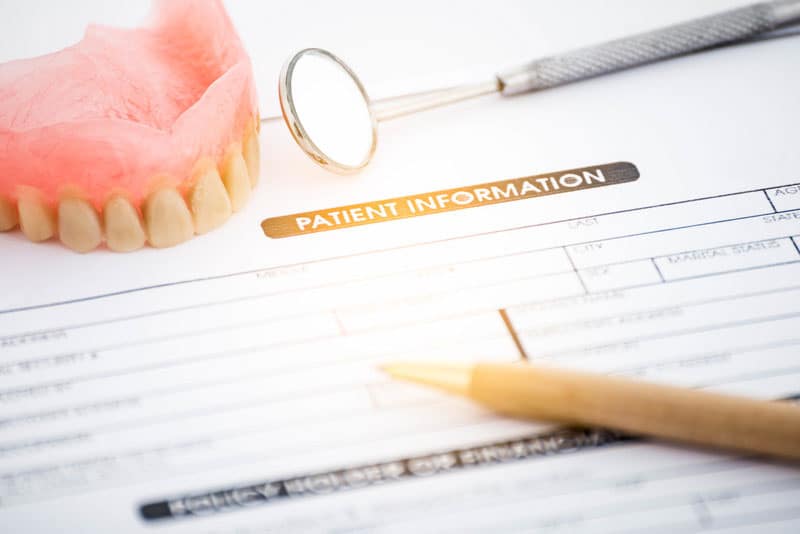The American Dental Association (ADA) has announced changes to the Code on Dental Procedures and Nomenclature (CDT Code) for 2019. These Current Dental Terminology (CDT) codes help to achieve uniformity, consistency and specificity in accurately documenting dental treatment. It also helps with the efficient processing of dental claims. Effective January 1, 2019, the CDT 2019 updates include 15 additions, five revisions and four deletions. Dentists as well as dental billing companies must stay updated with such dental code additions, revisions and deletions. As dental procedures continually evolve, annual CDT coding updates are crucial to effectively accommodate that evolution.
The California Dental Association (CDA) recommends all dental offices to have a current copy of the CDT to assist with proper claim billing.
New Codes Added
- D0412 blood glucose level test-in-office using a glucose meter (This procedure provides an immediate finding of a patient’s blood glucose level at the time of sample collection for the point-of-service analysis.)
- D1516 space maintainer – Fixed – bilateral, maxillary
- D1517 space maintainer – Fixed – bilateral, mandibular
- D1526 space maintainer – Removable – bilateral, maxillary
- D1527 space maintainer – Removable – bilateral, mandibular
- D5282 removable unilateral partial denture – One-piece cast metal, including clasps and teeth, maxillary
- D5283 removable unilateral partial denture – One-piece cast metal, including clasps and teeth, mandibular
- D5876 add metal substructure to acrylic full denture, per arch
- D9130 temporomandibular joint dysfunction – non-invasive physical therapies (Therapy including but not limited to massage, diathermy, ultrasound or cold application to provide relief from muscle spasms, inflammation or pain, intending to improve freedom of motion and joint function. This should be reported on a per session basis.)
- D9613 infiltration of sustained release therapeutic drug – Single or multiple sites (Infiltration of a sustained-release pharmacologic agent for long-acting surgical-site pain control. Not for local anesthesia purposes.)
- D9944 occlusal guard – Hard appliance, full arch
- D9945 occlusal guard – soft appliance, full arch
- D9946 occlusal guard – Hard appliance, partial arch (Provides only partial occlusal coverage such as anterior deprogrammer.)
(D9944, D9945 and D9946 codes are for removable dental appliance designed to minimize the effects of bruxism or other occlusal factors. Not to be reported for any type of sleep apnea, snoring or TMD appliances.) - D9961 duplicate/copy patient’s records
- D9990 certified translation or sign-language services per visit
Revised Codes
Strike through words are removed, as per latest CDT coding update.
- D5211 maxillary partial denture – resin base (including any conventional clasps retentive/clasping materials, rests and teeth). Includes acrylic resin base denture with resin or wrought wire clasps.
- D5212 mandibular partial denture – resin base (including any conventional clasps retentive/clasping materials, rests and teeth). Includes acrylic resin base denture with resin or wrought wire clasps.
- D5630 repair or replace broken clasp retentive/clasping materials – per tooth
- D7283 placement of device to facilitate eruption of impacted tooth. Placement of an orthodontic bracket, band or other device attachment on an unerupted tooth, after its exposure, to aid in its eruption. Report the surgical exposure separately using D7280.
- D9219 evaluation for moderate sedation, deep sedation or general anesthesia
Deleted Codes
- D1515 space maintainer – fixed – bilateral
- D1525 space maintainer – removable – bilateral
- D5281 removable unilateral partial denture – one-piece cast metal (including clasps and teeth)
- D9940 occlusal guard, by report (Removable dental appliances, which are designed to minimize the effects of bruxism (grinding) and other occlusal factors)
For dental coding, practices have to code for what they have done, not what is covered under the patient’s benefit plan. In cases where coders can’t find a code to describe a procedure, CDA recommends using the appropriate unspecified procedure code, by report, or the 999 code, along with the supporting narrative describing the service provided:
D4999 unspecified periodontics procedure, by report
According to the August 2017 survey conducted by NEA, three troublesome CDT codes were identified as D4341, D2740, and D2950, which require the most supporting documentation for adjudication, and the claims with these codes most often get rejected by payers after first submission. Professional dental medical billing and coding services provided by reliable medical billing and coding companies help practices receive maximum reimbursement for splints, bone grafts, oral implants, tooth fractures or any other procedures.


